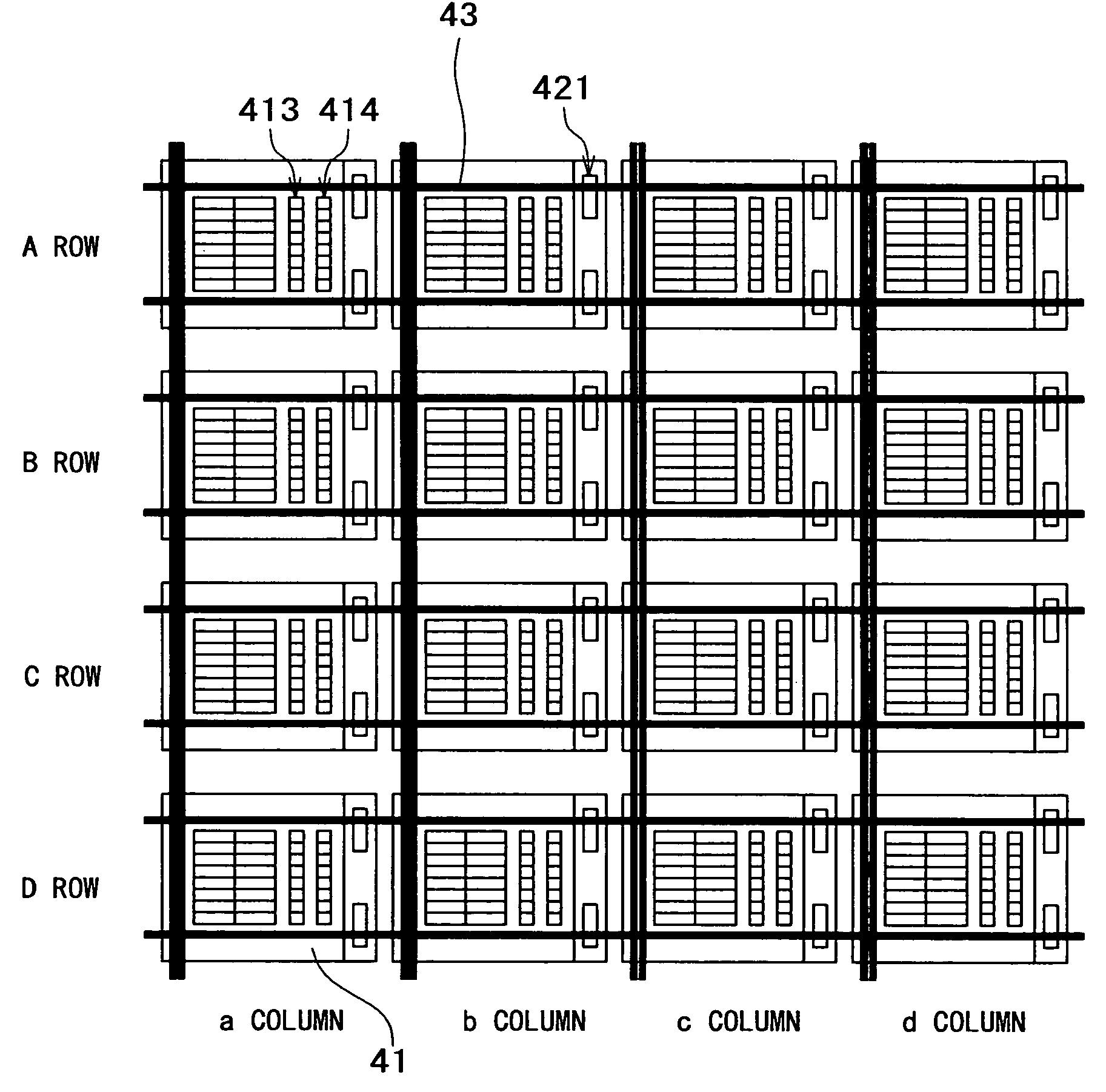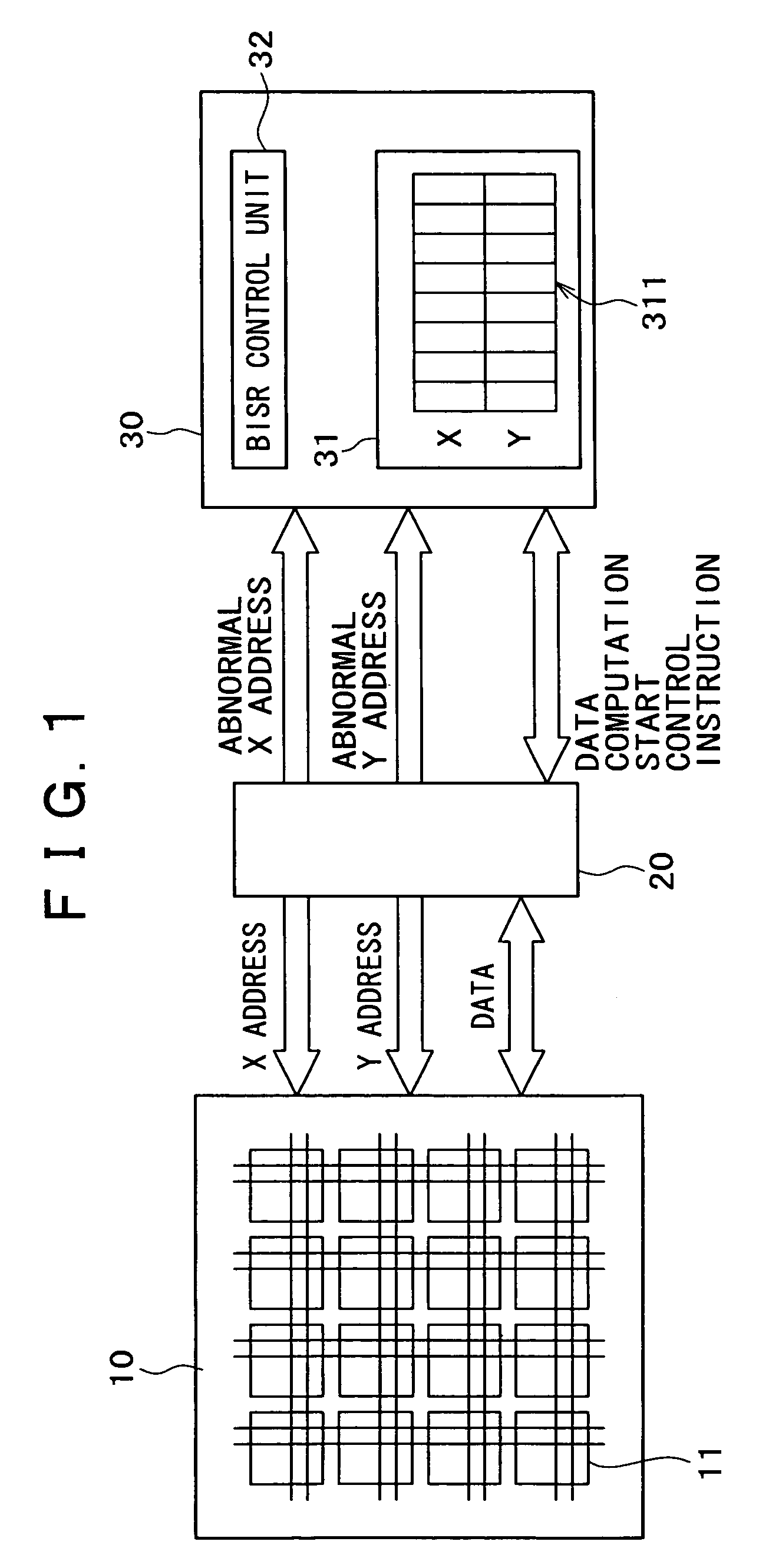Semiconductor memory apparatus and self-repair method
a memory apparatus and semiconductor technology, applied in the direction of digital storage, electronic circuit testing, instruments, etc., can solve the problems of almost impossible to increase the yield to 100%, the apparatus cannot of course be shipped as a product, and the yield becomes a big problem of fabrication
- Summary
- Abstract
- Description
- Claims
- Application Information
AI Technical Summary
Benefits of technology
Problems solved by technology
Method used
Image
Examples
Embodiment Construction
[0055]Preferred embodiments of the present invention are described in detail by referring to the diagrams as follows.
[0056]FIG. 1 is a block diagram showing a typical configuration of a semiconductor memory apparatus implemented by an embodiment of the present invention. As is obvious from FIG. 1, the semiconductor memory apparatus implemented by the embodiment as an LSI chip includes a RAM (or memory unit) 10 such as a DRAM or an SRAM, a BIST (Built-In Self-Test) circuit 20 and a BISR (Built-In Self-Repair) circuit 30. The RAM 10, the BIST circuit 20 and the BISR circuit 30 are included in the same LSI chip.
[0057]As shown in FIG. 2, the RAM 10 generally includes small unit blocks 11 having a memory core, which includes a plurality of memory cells laid out to form a matrix, and spare memory cells each serving as a redundant memory cell used for repairing an abnormal memory cell generated in a memory core. The small unit blocks 11 are each referred to hereafter as a redundant block 1...
PUM
 Login to View More
Login to View More Abstract
Description
Claims
Application Information
 Login to View More
Login to View More - R&D
- Intellectual Property
- Life Sciences
- Materials
- Tech Scout
- Unparalleled Data Quality
- Higher Quality Content
- 60% Fewer Hallucinations
Browse by: Latest US Patents, China's latest patents, Technical Efficacy Thesaurus, Application Domain, Technology Topic, Popular Technical Reports.
© 2025 PatSnap. All rights reserved.Legal|Privacy policy|Modern Slavery Act Transparency Statement|Sitemap|About US| Contact US: help@patsnap.com



